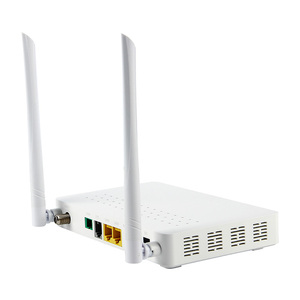Understanding the Optical Network Terminal Modem
The optical network terminal modem (ONT modem) represents a crucial technology in the world of modern telecommunications. This device serves as the bridging node between the fiber optic network and your home or business premises. By converting optical signals into electrical signals, and vice versa, it enables high-speed internet, voice, and video services over fiber optic lines. Its implementation not only enhances connectivity speeds but also ensures more reliable data transmission, thereby elevating the user experience during peak usage times.
Types of Optical Network Terminal Modems
Optical network terminal modems come in various forms, each tailored to different needs and network conditions. Here are the most common types:
- Single-Mode ONT: Offers superior performance by transmitting over longer distances, primarily used in metropolitan areas and large organizations.
- Multi-Mode ONT: Primarily used in local area networks (LANs) for shorter distance communications, suitable for residential buildings and small offices.
- GPON ONT: Optimized for Gigabit Passive Optical Networks, supporting high-speed internet, VoIP, and IPTV in a single system.
- XG-PON ONT: Extends capabilities for ultra-high-speed services, perfect for enterprises requiring robust data transfer capabilities.
Functions and Features of the Optical Network Terminal Modem
The functions and features of an optical network terminal modem significantly impact user experience and service quality. Key features include:
- High-Speed Data Transmission: Capable of delivering speeds up to several gigabits per second, catering to both residential and enterprise-level demands.
- Integrated Routing: Many ONT modems come equipped with built-in routing capabilities, simplifying installation and minimizing additional equipment needs.
- Quality of Service (QoS): Ensures prioritization of bandwidth for critical applications like video conferencing or online gaming.
- Multiple Ports: Typically features various Ethernet ports for wired connections, supporting multiple devices simultaneously.
- Wi-Fi Capabilities: Many modern ONTs offer built-in wireless connectivity, providing seamless internet access throughout a premises.
Benefits of Using an Optical Network Terminal Modem
Investing in an optical network terminal modem offers a myriad of benefits that cater to various needs:
- Reliability: Fiber optics are less prone to interference, ensuring a consistently strong signal even during high traffic periods.
- Future Proofing: ONT modems are designed to be adaptable to advances in technology, ensuring longevity in a rapidly evolving digital landscape.
- Environmental Efficiency: Optical fiber networks require less energy to transmit data compared to traditional copper cables, supporting sustainable practices.
- Enhanced Security: Fiber optics offer a higher level of security against data breaches as they are harder to tap into compared to conventional copper lines.
- Cost-Effectiveness: Although initial investments may be higher, the long-term savings from reduced maintenance and increased speed make ONT modems a financially sound choice.















































































































































































































